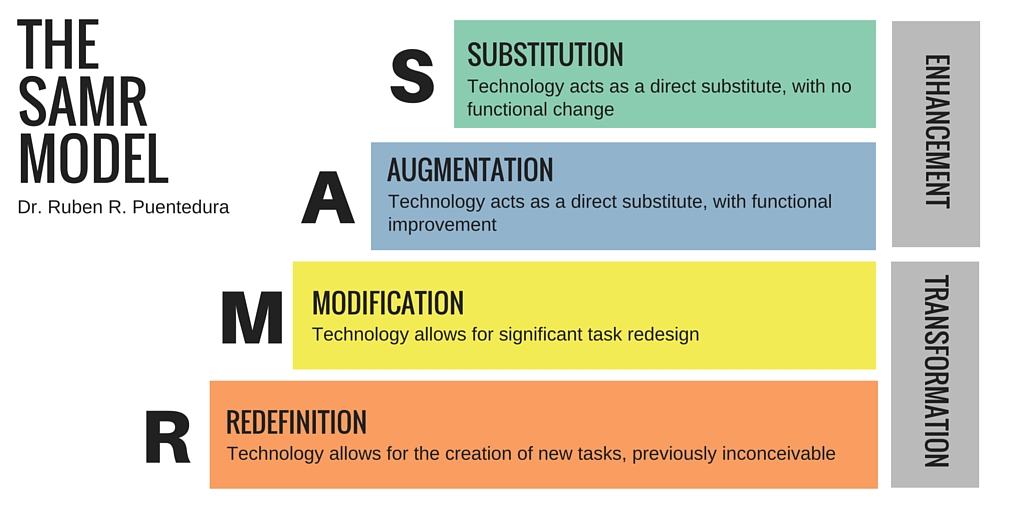It may seem odd but it looks as though there is a shortage of examples of how to apply the SAMR model to a course that is already fully online. Perhaps people think that because the course is 100% online then it must be reaching the full potential of what is possible online but I think this is far from the truth.
When I started out as an online tutor I used to despair of seeing online courses that comprised simply of a set of text resources that had to be read with assessment consisting of a few multiple choice quizzes and maybe a graded essay. This approach is demotivating and fails to take advantage of what can be achieved.
Only a few days ago I met an English learner who had been told that there were not enough people signed up to his level to warrant the setting up of a face to face class and therefore he would have to do it online in exactly the manner I have described above. A short chat with him revealed that what he needed above all else was to listen and speak in the language and this was not part of the online deal.
Chapter 4 in Tony Bates latest free book is excellent in showing the different types of online courses on offer. In some circumstances I can see a justification for preferring one above the other. Ie there is no ranking implied. But in practice I think that most online courses miss a great deal of potential by making the starting point the face to face classroom so that the online course becomes a poor mirror image of the classroom.
Here’s a thought experiment!
What if for millennia, we had been teaching online (I know, I know …. bear with me).
Then one day, some bright spark said
‘Hey, how about we teach face to face instead without any of the technology?’
What would the reactions be?
Mostly negative I bet.
So I’ll have to travel into the city to meet my class? It’s going to cost a fortune. I bet we don’t get our travel costs paid!
What about the students that live hundreds of miles away? They won’t come if they have to meet up. Our classes will be much smaller.
So how will I be able to share student work for comment? I suppose I could put it up on the wall for them to read.
So it will be mainly text-based. It won’t be possible for them to take photos. They will simply have to describe what they saw.
And on and on in a negative spiral, always focusing on the disadvantages.
We would have to set up training courses to pass on the advantages of being able to read body language and being able to make instant adjustments to our planned level once it became obvious that it was too low or too high. Etc etc.
SAMR to the rescue
It is natural to get used to what you have and to have questions about a new way of doing things. Here I believe the SAMR model could be very useful even in a situation where a course had been planned to be online from the beginning. Why? Because the SAMR model encourages us to see beyond what we do by default and to use the full potential of the new tools available to us to transform the learning so that its effect is amplified and deep.

How might the dull course described at the beginning of this post be changed? I’ll leave you to assign the SAMR levels that each of these suggestions reaches.
- So instead of looking for a text to act as information input, how about finding a video?
- Or how about getting the learners to do their own research which is then pooled and honed?
- Instead of having learners study on their own, include tasks that encourage interaction and exchange of views.
- Instead of limiting the pool of expertise to the students and their teacher, why not widen it out to the consulting of external experts?
And here are some classroom examples as inspiration.
